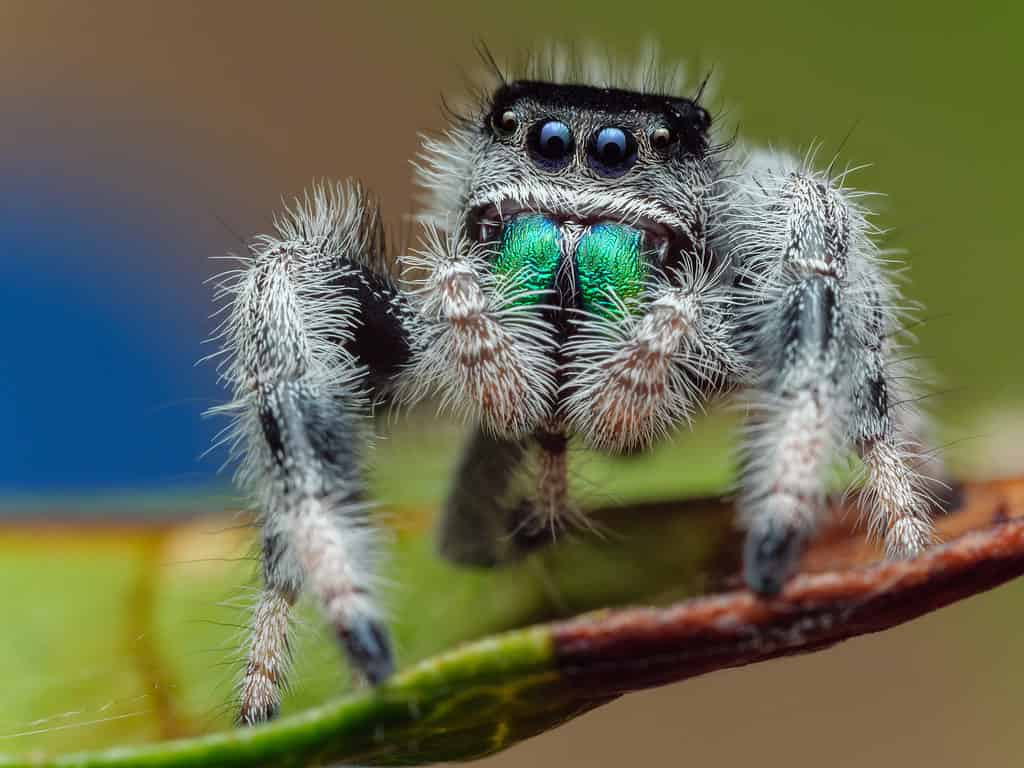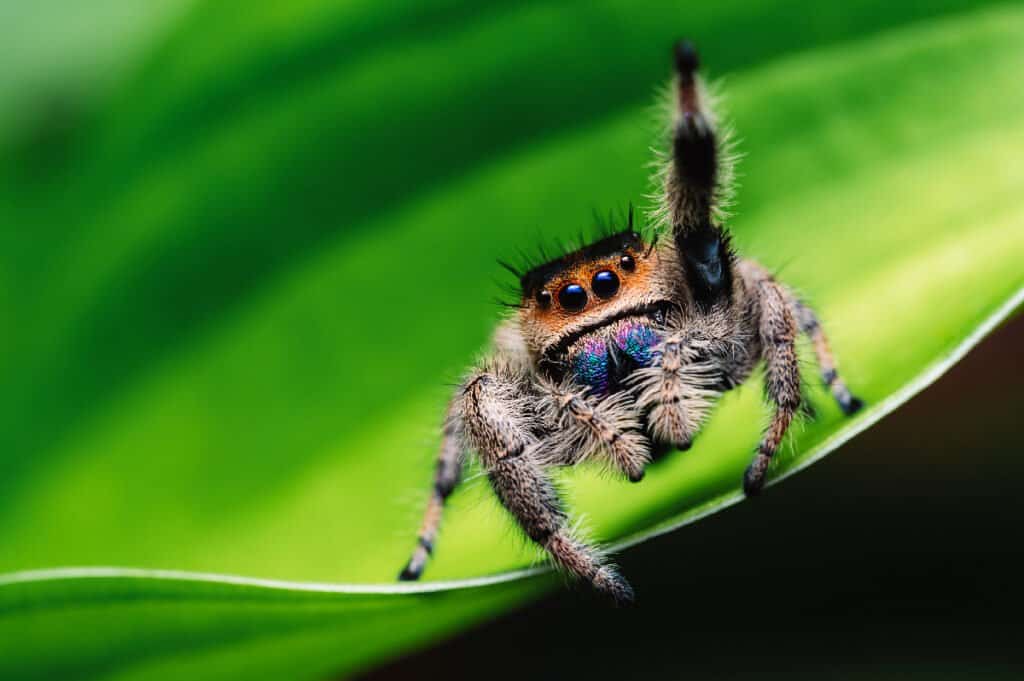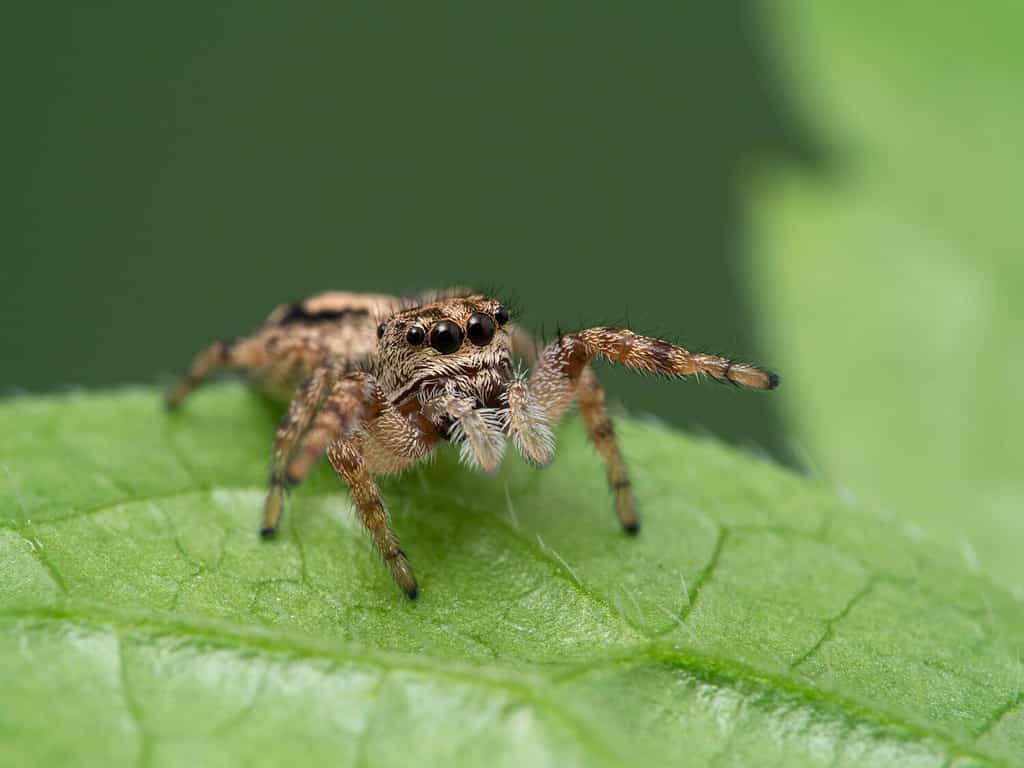Male vs. Female Jumping Spiders: How to Spot the Differences
Coming from the family Salticidae, jumping spiders are an interesting and impressive spider breed. They’re known for their excellent agility and incredible vision. They are one of the most diverse spider families, with over 6,000 species! Easily recognizable due to their distinct eye pattern, they have become a fan-favorite in the spider community.
In this article, we’ll be going over the many ways to determine whether or not a jumping spider is male or female. By understanding the differences of the sexes, as well as how these differences impact their behavior and interactions, we can have a fuller understanding of these creatures and the way that they function. Whether you’re a spider fanatic or own a jumping spider of your own, here is all the information you need about male vs. female jumping spiders.
Determining the Sex of a Jumping Spider

©iStock.com/Macrolife.it
6,345 People Couldn't Ace This Quiz Think You Can?Take Our A-Z-Animals Spiders QuizIn terms of the size of male vs. female jumping spiders, males are typically going to be smaller. This is because their size is related to the species’ reproductive habits. That said, the size of these spiders can vary across the different types of jumping spiders. Typically, male jumping spiders are going to be more varied in color and pattern. This is probably because it’s something they use to make themselves conspicuous to potential mates. In any case, females have a much more subdued look about them. This could also be related to their mating behavior, but even more likely is that the coloration helps the female spiders camouflage themselves and any eggs they might be guarding from predators.
In addition to their basic size and appearance, there are also specific anatomical differences that can help one to distinguish the males and females. Here are three such parts, as well as the function they serve. Keep in mind, however, that these parts are usually only visible on your jumping spider once it has already developed and reached maturity.
Epigyne
An exclusively female body part, the epigyne is a reproductive organ found on the lower abdomen of these spiders. It’s small and hard, and can often look like a little black spot. It’s used to store the sperm of the female jumping spider’s partner during the mating process. If you want to check for one, try to look at your spider from its underside, trying to identify something small and hard. If you find one, you’ll know that your jumping spider is female!
Pedipalps
A set of appendages on the mouth of a spider, this organ has a number of purposes. It’s used to help with movement, capturing prey, and also has a function involving reproduction. While the presence of the pedipalps is universal, it will often be much larger in the male vs. female jumping spider. The reason for this is that male spiders use the pedipalps to deposit their sperm into their female partner.
In terms of appearance, the male pedipalps will be large and round in a male. In a female, though, the pedipalps will be a lot more small and slim.
Chelicerae
The last organ is the chelicerae, which are two mouthpieces near the opening of the spider’s mouth. These also have a lot of purposes, but catching prey is their primary function. A good way to distinguish the jumping spiders’ sex using the chelicerae is by color. A male will usually have blue-green chelicerae, and a female will usually have one that is pink or purple. This isn’t an end-all-be-all rule, though, and can sometimes prove itself inaccurate.
Behavior of Male vs. Female Jumping Spiders

©iStock.com/Jan Rozehnal
Another way to distinguish the two jumping spider sexes is by observing their behavior. Specifically, the way they act during mating. One thing that male jumping spiders are known for is elaborate displays to attract females. This can be anything from an intricate dance to a vibrating motion. Some of these jumping spiders will also produce interesting seismic signals by tapping their abdomen against the substrate. These two tactics, along with vibrant color displays, are pretty exclusively male.
On the other hand, females have their own courtship routines. They usually are the ones evaluating the displays of the males, and picking their choice of mate based on whomever impressed them the most. Something notable in female spiders, though, is mating aggression. If they find a potential suiter to be unfit for them, they can engage in sexual cannibalism. This is the practice of eating your partner post-mating. But hey, these ladies know what they want!
The Reproductive Roles of Male vs. Female Jumping Spiders

©Ernie Cooper/Shutterstock.com
The last way that we can distinguish the two sexes of jumping spiders is by their reproductive roles. The men use their pedipalps, as discussed, to transfer their sperm into the epigyne of the female. The success of this is usually determined by whether or not the male made the qualification to not be eaten post-copulation. Once they’ve successfully made the cut, it’s not unusual for the male to leave and roam around in search of more partners.
After mating occurs, the females produce and lay eggs, fertilizing them internally using the deposited sperm. Once the eggs are lain, they are usually encased in a silk sac to be protected from predators. The number of eggs varies, but it can be anywhere from 100 to 300 eggs.
The males leave immediately, so they don’t have a large role in parenting the hatchlings. The females usually exhibit more parental care and will guard the egg sacs from predators until they are ready to hatch. Some species of jumping spider will stay with their hatchlings for a while after they’re born to add additional protection, but others will simply part ways.









